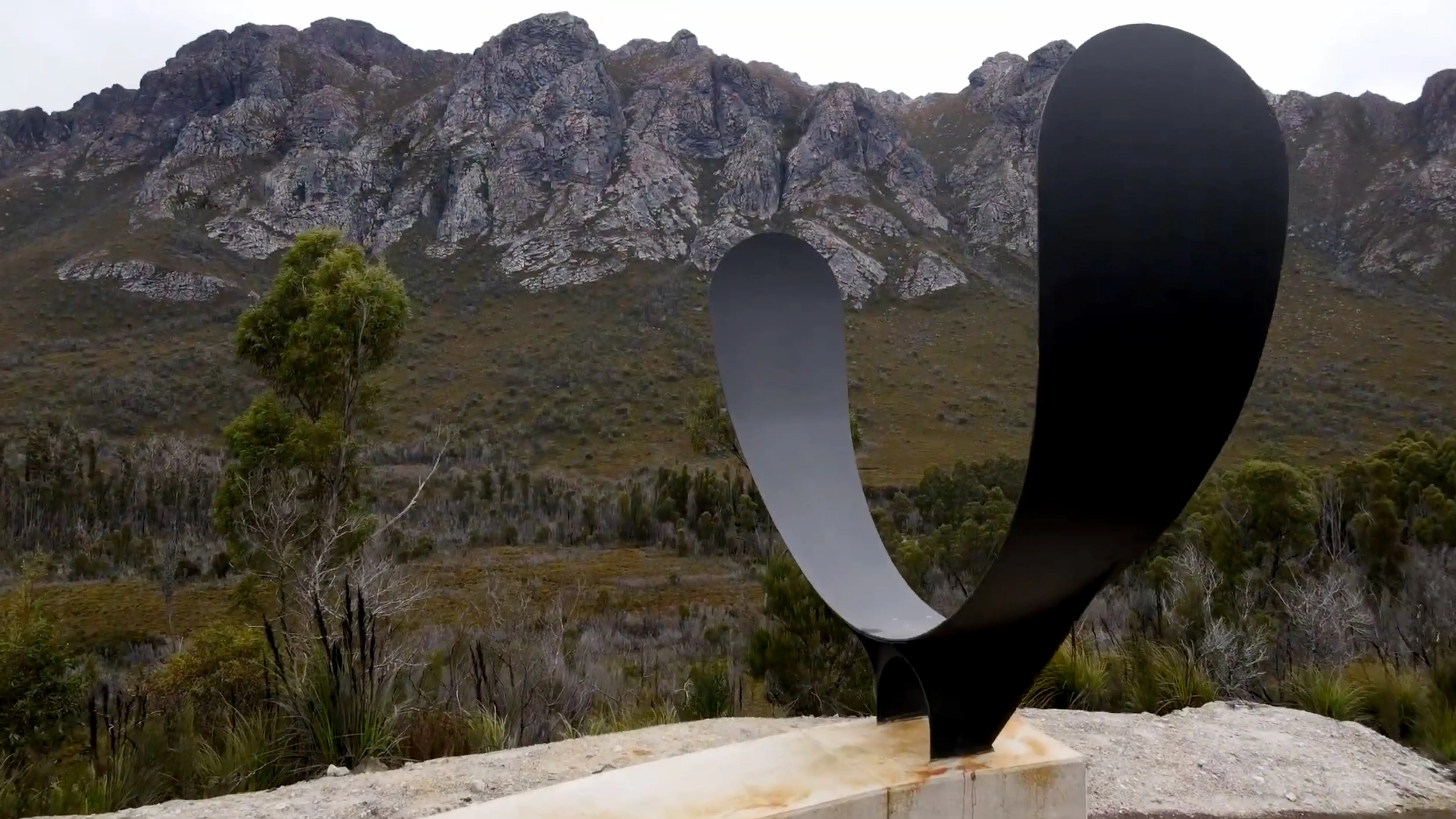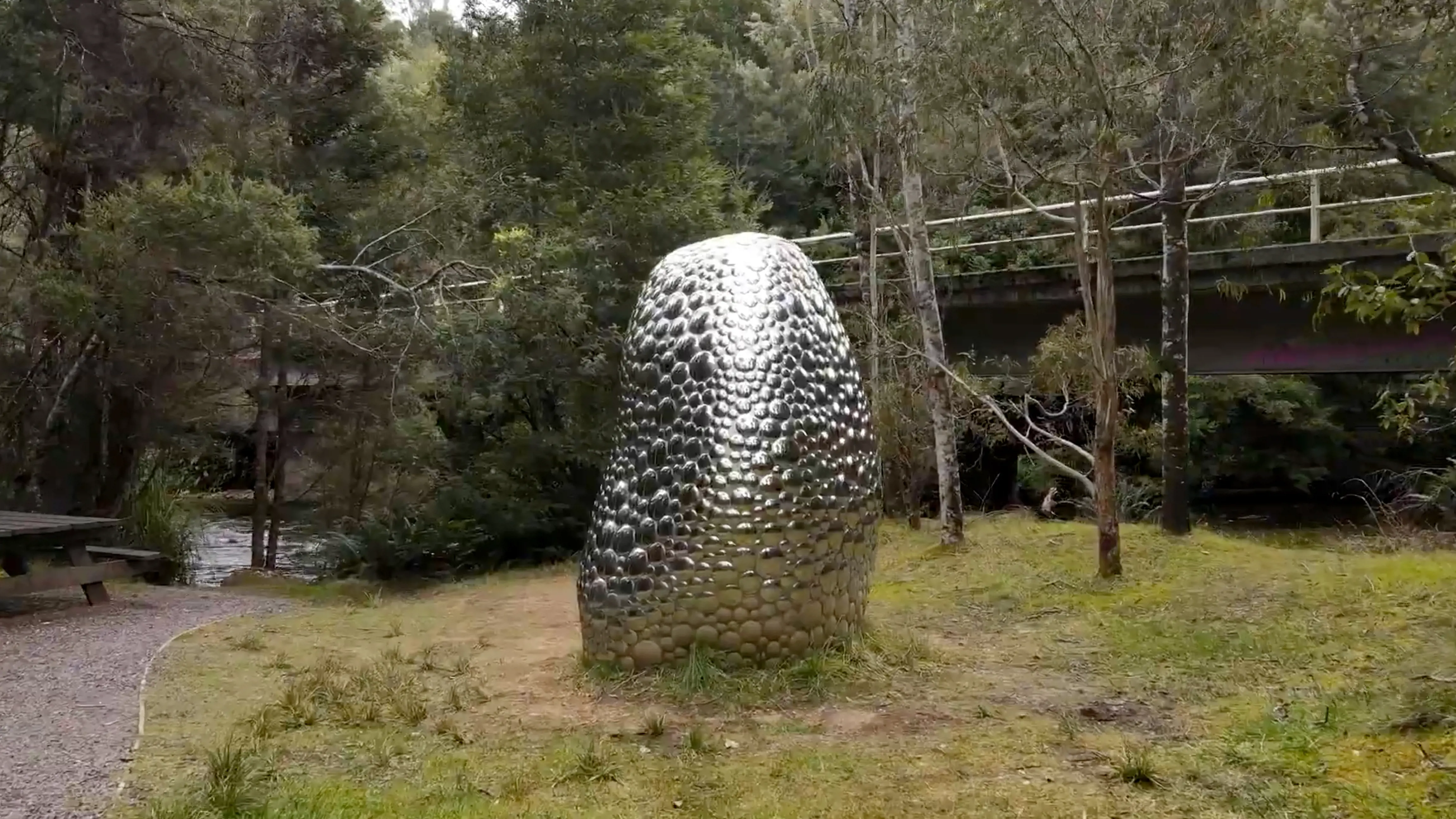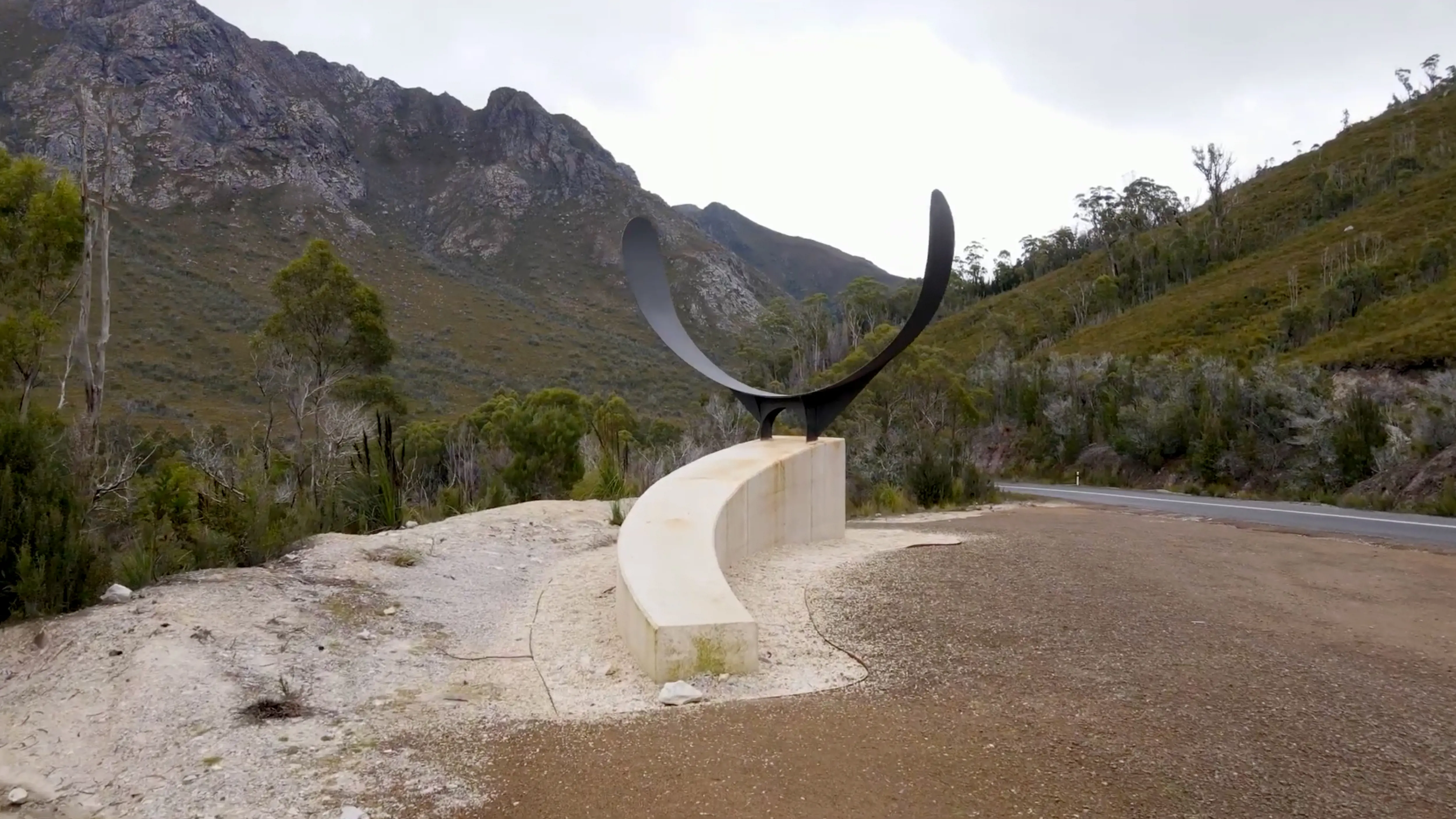Art and nature share a wild edge in the untamed landscape of Tasmania’s west.
Chart a course to visit three public art installations, inspired by the region’s compelling stories, each offering moments of quiet reflection and inspiration.
Forest Specular
The 1300 convex mirrors of Nadège Philippe-Janon’s Forest Specular reflect the surrounding forest along the banks of the Franklin River in Franklin-Gordon Wild Rivers National Park. The work pays homage to the activists who campaigned to stop the damming of the river in the late 1970s and early 1980s, in what became one of Australia’s most significant environmental campaigns. The mirrors represent each of the people arrested during the protests. Forest Specular is modelled on a worn river rock found on site, and is a nod to Rock Island Bend, an image captured by celebrated Tasmanian wilderness photographer Peter Dombrovskis, which helped inspire the campaign that ultimately saved the river.
Where
Franklin Nature Trail, Lyell Hwy.
Bitumen Bones
Located at the foot of the arresting Sentinel Range in Southwest National Park, Bitumen Bones is Alex Miles’s response to the “beautiful and often harsh environment” of south-west Tasmania. Inspired by and featuring Wombat, a sombre and reflective poem by Tasmanian Sarah Day, the artwork has two parts: a quartzite rammed-earth wall to signify bleached bones; and black steel wings to represent the forest ravens that scavenge roadkill by the roadside. The work is installed at the edge of the Gordon River Road, inviting passersby to stop and contemplate the remarkable scenery and their place within it.
Where
Gordon River Rd, Sentinel Range.
The Extinction Story
The Extinction Story by sculptor Matt Calvert was inspired by his grandfather, a trapper in north-west Tasmania in the 1920s. While snaring wallabies and possums, trappers would occasionally catch a thylacine, or Tasmanian tiger, the carnivorous marsupial emblematic of Tasmania and hunted to extinction in the 1930s. The large-scale fabricated-steel and laminated-glass artwork re-creates a confronting historical photo of a thylacine hanging by its feet. The north-west region is considered the last stronghold of the thylacine, and the sculpture is near the area where Calvert’s grandfather worked, making it a fitting place for the artwork. The thylacine is officially extinct, but more than a few people believe they still roam the wilds of takayna/Tarkine.
Where
Whyte Hills Lookout, Waratah.



